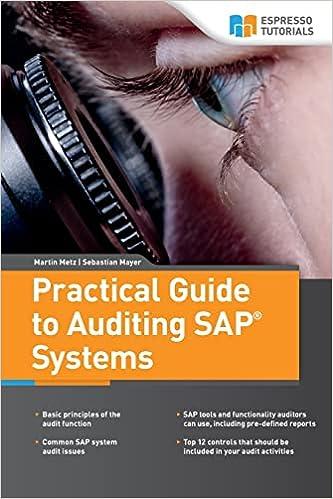ince its inception, Eco Plastics Company has been revolutionizing plastic and developed a biodegradable plastic that her company is marketing to manufacturing companies throughout the southeastern United States. After operating as a private company for 6 years, Eco went public in 2012 and is listed on the Nasdaq Stock exchange As the chief financial officer of a young company with lots of investment oppor- tunities, Eco's CFO closely monitors the firm's cost of capital. The CFO keeps tabs on each of the individual costs of Eco's three main financing sources: long-term debt, preferred stock, and common stock. The target capital structure for Eco is given by the weights in the following table: Source of capital Long term dele Preferred stock Common stock equiry Total 50 100 At the present time, Eco can raise debe by selling 20-year bonds with a $1,000 par value and a 10.5% annual coupon interest rate. Eco's corporate tax rate is 40%, and its bonds generally require an average discount of 545 per bond and flotation costs of $32 per bond when being sold. Eco's outstanding preferred stock pays a 9% dividend and has a $95-per-share par value. The cost of issuing and selling additional preferred stock is expected to be 57 per share. Because Eco is a young firm that requires lots of cash to grow it does not currently pay a dividend to common stockholders. To track the cost of common stock the CFO uses the capital asset pricing model (CAPM). The CFO and the firm's investment advisors believe that the appropriate risk-free rate is 4% and that the market's expected return equals 13%. Using data from 2012 through 2015, Eco's CFO estimates the firm's beta to be 1.3. Although Eco's current target capital structure includes 20% preferred stock, the company is considering using debt financing to retire the outstanding preferred stock, thus shifting their target capital structure to SOS long-term debt and 50% common stock. If Eco shifts its capital mix from preferred stock to debt, its financial advisors expect its beta to increase to 1.5. TO DO a. Calculate Eco's current after-tax cost of long-term debe b. Calculate Eco's current cost of preferred stock. 437 438 PART 4 Risk and the Required Rate of Return 6. Calculate Eco's current cost of common stock. d. Calculate Eco's current weighted average cost capital 6. (1) Assuming that the debt financing costs do not change, what effect would a shift to a more highly leveraged capital structure consisting of 50% long- term debt, 0% preferred stack, and 50% common stock have on the risk premium for Eco's common stock? What would be Eco's new cost of com- mon equity? (2) What would be Eco's new weighted average cost of capital? (3) Which capital structure-the original one of this one-seems better? Why? ince its inception, Eco Plastics Company has been revolutionizing plastic and developed a biodegradable plastic that her company is marketing to manufacturing companies throughout the southeastern United States. After operating as a private company for 6 years, Eco went public in 2012 and is listed on the Nasdaq Stock exchange As the chief financial officer of a young company with lots of investment oppor- tunities, Eco's CFO closely monitors the firm's cost of capital. The CFO keeps tabs on each of the individual costs of Eco's three main financing sources: long-term debt, preferred stock, and common stock. The target capital structure for Eco is given by the weights in the following table: Source of capital Long term dele Preferred stock Common stock equiry Total 50 100 At the present time, Eco can raise debe by selling 20-year bonds with a $1,000 par value and a 10.5% annual coupon interest rate. Eco's corporate tax rate is 40%, and its bonds generally require an average discount of 545 per bond and flotation costs of $32 per bond when being sold. Eco's outstanding preferred stock pays a 9% dividend and has a $95-per-share par value. The cost of issuing and selling additional preferred stock is expected to be 57 per share. Because Eco is a young firm that requires lots of cash to grow it does not currently pay a dividend to common stockholders. To track the cost of common stock the CFO uses the capital asset pricing model (CAPM). The CFO and the firm's investment advisors believe that the appropriate risk-free rate is 4% and that the market's expected return equals 13%. Using data from 2012 through 2015, Eco's CFO estimates the firm's beta to be 1.3. Although Eco's current target capital structure includes 20% preferred stock, the company is considering using debt financing to retire the outstanding preferred stock, thus shifting their target capital structure to SOS long-term debt and 50% common stock. If Eco shifts its capital mix from preferred stock to debt, its financial advisors expect its beta to increase to 1.5. TO DO a. Calculate Eco's current after-tax cost of long-term debe b. Calculate Eco's current cost of preferred stock. 437 438 PART 4 Risk and the Required Rate of Return 6. Calculate Eco's current cost of common stock. d. Calculate Eco's current weighted average cost capital 6. (1) Assuming that the debt financing costs do not change, what effect would a shift to a more highly leveraged capital structure consisting of 50% long- term debt, 0% preferred stack, and 50% common stock have on the risk premium for Eco's common stock? What would be Eco's new cost of com- mon equity? (2) What would be Eco's new weighted average cost of capital? (3) Which capital structure-the original one of this one-seems better? Why







